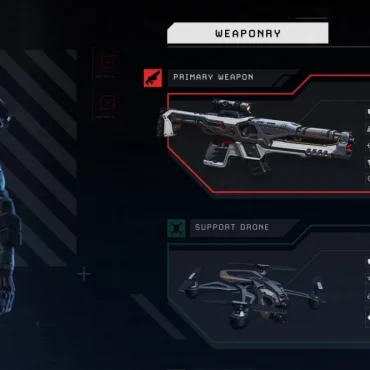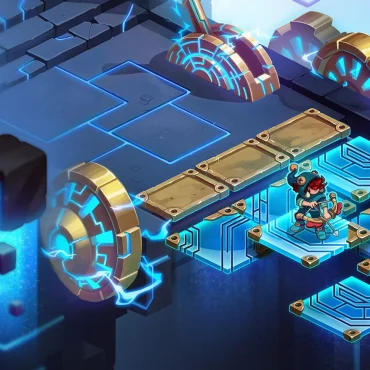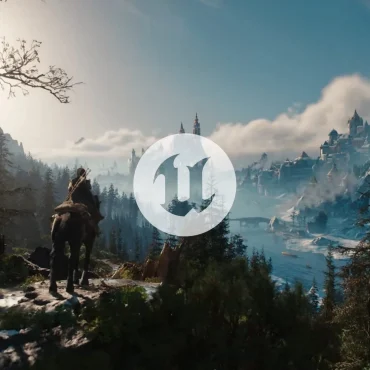If you’re planning to release your game on multiple platforms, remember that there is no one-size-fits-all approach. PlayStation, Xbox, and Switch each have their own console certification process, which implies passing a detailed checklist that includes technical requirements, content guidelines, and performance benchmarks. The volume of documentation can be immense and many standards you need to follow will depend on your game’s features. No two games will have exactly the same set of requirements or face identical challenges, so it’s imperative to research and prepare an extensive, tailored plan for each platform.
However, there are still some useful tips that may help you navigate this complex process and avoid many of its pitfalls.
Getting the development kits
The first and obvious step – to develop and publish games on consoles you’ll need the platform’s proprietary game development kits (devkits) or a console development partner that has them.
Obtaining PlayStation, Switch, and Xbox development kits typically requires being a registered developer with Sony, Microsoft, and Nintendo respectively. Here are the general steps you would need to take:
- Register as a developer: This usually involves filling out an application form, agreeing to their terms and conditions, and potentially paying a fee.
- Approval process: Once you’ve applied, Sony, Nintendo, and/or Microsoft will review your application. They may require information about your company, previous game development experience, and your intentions for using the devkits.
- Developer agreement: If your application is approved, you’ll need to sign a developer agreement that outlines the terms under which you can access and use the devkits.
- Purchase or loan devkits: Depending on the arrangement, you may need to purchase the devkits outright or they may be provided to you on loan. Devkits can be expensive, so this is an important consideration.
- Access developer resources: Once you have the devkits, you’ll gain access to a variety of developer resources including documentation, software tools, forums, and support channels. These resources will help you develop and test games for the platforms.
- Comply with guidelines: As a developer, you’ll need to adhere to the platform’s guidelines and standards for game development. This includes technical requirements, content guidelines, and any other policies they have in place.
Keep in mind that the process may vary slightly depending on your location and specific circumstances. It’s also worth noting that access to Xbox, Switch, and PlayStation developer kits is typically reserved for established game development companies or individuals with a track record in the industry.
Publishing games on different platforms: Our tips
Now, getting back to the juice of the topic, here are our general tips based on our cross-platform game dev experience, boiled down by our Senior programmers Volodymyr Tsaruk and Oleksandr Storozhuk.
Regardless of the type and complexity of your game, these pointers will be useful to all game developers attempting to navigate the console certification process and multi-platform publishing:
Forward-planning game design
Early and continuous consideration of the platform-specific requirements when laying down your game’s technical and design foundations is crucial. It can preempt many issues that arise from porting a game from one system to another. Structuring the game in a way that abstracts platform-specific details (like integrating achievements and working with datafiles) will lead to more streamlined, cost-effective development. For example, having a flexible input system from the start can simplify the adaptation to different controller layouts, and designing with scalability in mind makes it easier to adjust graphical fidelity across platforms. Addressing these from the outset will lead to a smoother transition and a more polished final product across all the targeted gaming platforms.
Strong QA team
Don’t underestimate the value of a comprehensive QA process. Quality assurance for multi-platform releases can be exponentially more complex than single-platform development. Your QA team must have an acute knowledge of each platform’s quirks and be able to assess the game’s performance across a range of hardware configurations. They must also be versed in the submission and console certification processes, able to test specifically for compliance with each console’s technical requirements. This process often includes rigorous stress testing, compatibility checks with different models of the consoles (such as PS4 vs. PS4 Pro), and adherence to platform-specific design guidelines such as the use of controller icons. Failure to pass console certification can mean costly delays, so a competent QA team is an investment in the smooth launch of your game.
Handling devkits
Accessing and managing PlayStation, Switch, and Xbox development kits often involves hardware logistics and security. For distributed or remote-based teams, orchestrating secure access to these kits can prove complicated, as they often cannot leave the office or have strict usage protocols. The limitation on remote access can delay development, necessitating creative solutions like virtual workstations or secure transport of devkits between team members. In some cases, additional costs may arise from the need to procure multiple devkits for various team members or to cover frequent updates and maintenance for the hardware provided by the console manufacturers.
Engine plugins and compatibility
Relying on third-party plugins can be a double-edged sword. While they provide out-of-the-box functionality and can save development time, they may also introduce inconsistencies across different platforms. Some plugins are not optimized for the performance constraints of consoles like Switch, and this can lead to longer loading times, graphical glitches, or even crashes. Or there might be just a random game-breaking bug on one specific console with this plugin. It might be quite problematic depending on how deeply integrated this plugin already is into your game and how well the author supports the plugin to help you troubleshoot.
Always thoroughly test plugins on each console you intend to support. Before committing to a plugin, vet the developers’ support history and response to updates. The future stability and upgradability of your game may depend on it.
File systems and UGC
Navigating the nuances of each platform’s file system is crucial for providing a seamless user experience. For instance, the PlayStation certification process requires distinct cloud storage solutions that necessitate the integration of specific APIs for handling save data. This means that you should carefully consider how to design your game’s save system to accommodate platform-specific data management and synchronization requirements.
When it comes to user-generated content (UGC), the devil is often in the details. Seemingly straightforward features like custom characters or team names in co-op games can subject you to the scrutiny of each platform’s content policies. Since UGC encompasses a broad spectrum of player-generated content—from uploading your images and crafting customized levels to game chats and voice chats—it’s important to be aware of Switch, PlayStation, and Xbox certification requirements. Beyond implementing the requisite language filters, you must consider how to manage copyright issues should players inadvertently recreate protected content within your game.
Console generations
Designing for multi-generational consoles adds another layer of complexity, requiring you to optimize the game differently for each generation’s hardware capabilities. PlayStation 4 and PlayStation 5, for example, not only have different performance capacities but also boast different features such as haptic feedback on the PS5’s DualSense controller that aren’t available on the previous generation. Addressing these away from the get-go can prevent potential setbacks later during the console certification process of your game.
Another factor to consider when publishing across console generations is the intricacies of game saves and cross-generational play. Players upgrading from the PS4 to the PS5 may expect to carry over their progress and continue their experience seamlessly. Ensuring save game compatibility and potentially supporting cross-gen multiplayer features add layers of complexity to both the development and testing phases.
Importance of optimization
Optimization is a term that casts a long shadow over the process of publishing a game on various platforms. Publishing on Nintendo Switch first, which has less powerful hardware compared to other consoles, you can ensure that performance issues are addressed early on. If your game runs smoothly on the Switch, you potentially ease the optimization process for other platforms. Nevertheless, there can be unexpected challenges; certain game features (like rope physics) might be efficient on one system yet strain the resources of another.
Keep in mind that while the baseline to pass the console certification process is a stable 30 frames per second (FPS), modern players expect 60+ FPS for the smoothest experience.
Managing post-release updates
When it comes to post-release patches and updates, consoles are a different beast than PC. This requires some forward planning. While Steam developers can push updates promptly, PlayStation certification process for patches and updates can take weeks. This process includes testing for both new content and ensuring that any changes do not disrupt the existing game. Plan for this by booking your first-day patches well in advance—approximately 1 to 1.5 months before release to ensure a swift approval.
Development and publishing support
Developing games on different platforms and console certification processes isn’t something you can take lightly. Developers must fully commit to it and be ready to make mistakes, especially if it’s the first time doing this. Alternatively, to ease up that technical burden and focus on good stuff you can partner up with an experienced console gamedev company.
N-iX Game & VR Studio has vast experience developing games on PC, consoles, and VR devices. We have been in this industry since 2012 and worked both on indie gems and AAA-level behemoths. Our team can help you bring your game to all platforms and cater to a wider audience of gamers. Here are some great console projects that we’ve worked on in recent years:
Our projects: Speed Crew
Speed Crew is a collaborative effort between Wild Fields and N-iX Game & VR Studio It is a fast-paced party game, where players assume the role of pit-stop mechanics, tackling repairs and navigating obstacles in a bid to keep racing cars in top shape. The project boasts local and online multiplayer modes, complex game mechanics, an immersive storyline, and dynamic visuals with a retro flair.
Our contributions to Speed Crew encompassed almost every aspect of the game: design, art direction, UI/UX design, Unity development, QA testing, and porting to Nintendo Switch, Xbox, and PlayStation, passing console certification process. We continue to refine the game based on player feedback and are gearing up for new content updates.
See our behind-the-scenes development story where we talk more about the game and publishing on Nintendo Switch.
Our projects: The Devil in Me
Supermassive Games collaborated with N-iX Game & VR Studio to create The Devil in Me, a hyper-realistic, story-rich videogame from The Dark Pictures Anthology series. Our crew began contributing to the game’s development from the beginning. Our Unreal Engine developers worked on practically every new mechanic in The Devil in Me. These include the movement system, different puzzles and animations, inventories, QTE, dioramas, and so on. Our developers worked with the Supermassive Games team to design a complicated bot system that can play the game from beginning to end. This method greatly simplifies the QA process and is critical for creating a highly polished end result and an immersive, bug-free experience for gamers. The game is available on PC, Xbox, and PlayStation.





